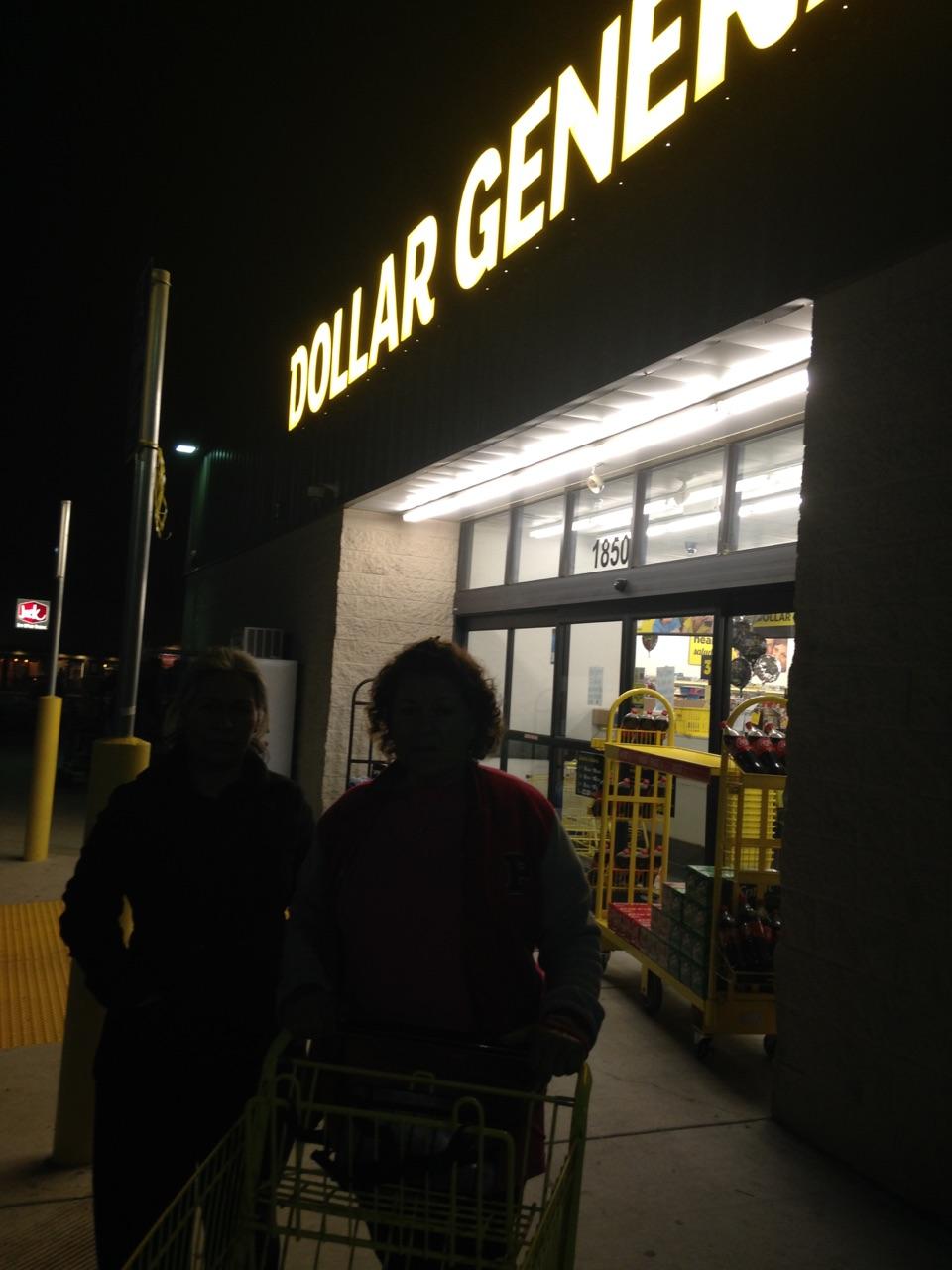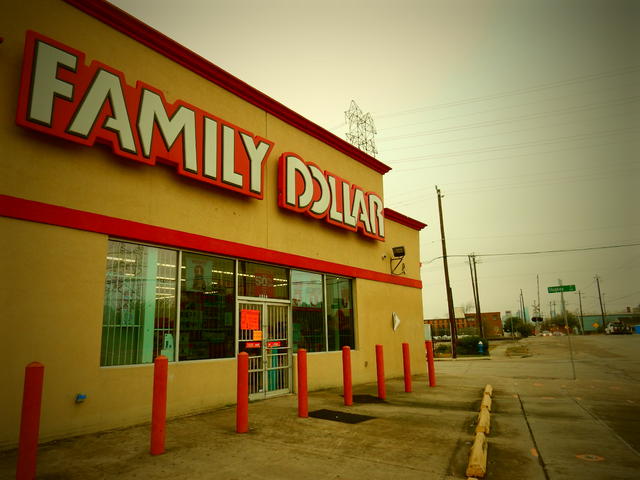
(Photo Credit: Yudith Nieto)
From brightly colored strip malls to rural roadsides, dollar stores are ubiquitous in almost every part of the country. Their purpose is to sell the absolute cheapest products possible, making the stores incredibly accessible for people from almost all walks of life. However, this accessibility has led to a dependence on dollar stores for low-income Americans. The core customer base, around 42%, has an average income of less than $30,000 a year. 40% of dollar store buyers rely on public assistance of some type. For many families, dollar stores are the only source of their household necessities, including food, children’s toys, and clothing.
However, these cheap products do not come without a more significant cost. Despite low prices, dollar stores are selling products with high levels of toxicity, posing a significant threat to the most vulnerable population. In February of this year, the Campaign for Healthier Solutions and Healthystuff.org conducted a study to determine the presence of toxic chemicals in dollar store products. The study tested 164 products at 4 major discount retailers—Dollar General, Dollar Tree, Family Dollar, and 99 Cents Only—in 6 states. Researchers tested for antimony, arsenic, bromine, chlorine, lead, mercury, and tin. Of the 164 products tested, 133 (81%) were found to have at least 1 toxic chemical above established levels of concern, and 49% contained 2 or more toxic chemicals. These levels of toxicity can pose a grave danger to the consumer.
Read the full report here.
In fact, multiple products actually contained excessive lead, including a table cover and jewelry designed for children and teens. A dangerous heavy metal, lead has been deemed unsafe for children at all levels. Even the slightest exposure to lead impacts a child’s brain development, resulting in irreversible learning and developmental problems. Lead is a potent neurotoxin that has already been regulated by the US Consumer Product Safety Commission, yet the study still found the substance in products targeted at families and children.
Another chemical of great concern, vinyl plastic, was found in 63 (38%) of the products tested. Vinyl plastic, which itself is linked to asthma and lung problems, also contains plasticizers that maintain its flexibility, referred to as phthalates. Phthalates are endocrine disruptors, toxic chemicals that can cause birth defects, cancer, asthma, allergies, thyroid problems, and kidney disease. Exposure occurs easily because phthalates are not chemically bound to the vinyl, and therefore tend to leach out or evaporate into the air and food. Humans are typically exposed to phthalates dermally, or through ingestion or inhalation. Due to these serious health risks, phthalates—specifically DEHP, BBP, and DBP—have been banned in the US in children’s products above concentrations of 0.1% since 2009. Despite this ban, the Dollar Store Report found that 12 of the products tested, 32% of all products containing vinyl plastic, had toxic phthalates above the CPSC’s limit. Not only are dollar stores knowingly selling dangerous products, but they have also shown blatant disregard for safety regulations, placing our nation’s children at serious risk for health problems.

(Photo Credit: Lideras Campesinas)
Above all, these alarming toxicity levels in our country’s dollar stores illuminate a necessary discussion about environmental justice. In many communities where dollar stores are located, the stores are simply the only establishment selling essential household products. Therefore, people of color and low-income families are trapped in a dangerous cycle: even if they wanted to protect their family from hazardous chemicals, they have no access to healthier, safer alternatives. Dollar stores knowingly create toxic monopolies, exposing vulnerable families to hazardous chemicals. In fact, Family Dollar policies specifically target “food deserts”, or impoverished rural towns or urban neighborhoods where they would be the only store selling food. The people in these areas already experience reduced availability of medical care, fresh food, and public services. Therefore, these families’ overall health already affords them a diminished ability to withstand toxic chemical exposure. Dollar store products may be cheap, but the long-term costs associated with health problems are enormous.
The US has a long history of environmental injustice, consistently putting vulnerable people at risk by disproportionately exposing them to sources of ecological harm. For example, sites for chemical or waste dumping tend to be placed in low-income areas or communities of color. Non-white communities have an average of 48 hazardous waste sites per square mile, while White communities have just two. Toxic chemicals in dollar store products are only adding to the burden placed on these vulnerable populations. Dee Treviño of Houston, Texas describes the dangerous situation faced by low-income families:
“My family is already exposed to pollutants and other environmental dangers, so why would I add onto that? Seeing illnesses in my own extended family and lack of access to healthcare, why would I increase my family’s chances of developing something due to my poor choices when buying products?”
While dollar stores experience sales totaling $36 billion (40% of these profits go toward food products—most of which are unhealthy and may be packaged with plastics containing toxic BPA), low-income families struggle to make ends meet and are forced to shop at these toxic chemical-infested dollar stores.
These dangers are not just theoretical: it has been proven that low-income communities and people of color are excessively experiencing the negative health impacts linked to toxic chemical exposure. Overall, communities where 15% or more of the population is non-White bear more than 20 times the environmental burden of White communities, with 10 times the chemical pollution released per year. In fact, African-American and Mexican-American children are much more likely to be lead poisoned than White children. African-American children have double the asthma rates of White, Hispanic, and Asian children. By ignoring federal regulation and manufacturing products with toxic chemicals, dollar stores only serve to further this harmful trend.
The danger posed by toxic chemical exposure in dollar store products is what the Campaign for Healthier Solutions is trying to alleviate. The campaign is a grassroots organization across 4 states, based around the principles of environmental justice. I spoke with José Bravo, the campaign’s National Coordinator, to learn about their recent work. As he explained, their core belief is simple: “Everybody should have the ability to shop wherever they want without being poisoned.” The Campaign for Healthier Solutions sent a letter with signatures from organizations in 27 states to the CEO’s of each store. These letters asked them to halt the sale of toxic products to low-income communities and to adopt policies that require disclosure of toxics and removal of the substance if there is a safer alternative available. These letters stipulate the Campaign for Healthier Solutions’ demands: that the dollar stores change their policies, that the chains themselves demand reform from their suppliers, and that they improve the quality of their food offerings. With the lack of accessible fresh food for people in dollar store-dependent areas, the stores could make an enormous difference in the community if they were to sell fruits and vegetables from the local area. Mr. Bravo believes dollar stores should aim to place foods from community gardens onto their shelves. “It would give consumers access to the fresh food in an affordable manner.”
Finally, the campaign demands a face-to-face meeting with the CEO of each chain. This face-to-face meeting would be an effort to help the company craft a new chemicals policy by giving them examples of preexisting successful campaigns. It is neither impossible nor particularly arduous for dollar store chains to change their policies. Successful and comprehensive strategies already exist and have been implemented by stores like Wal-Mart and Target. Dollar stores could model their chemicals policies after these standards, including ingredient disclosure and risk assessment. These strategies are well documented and can be designed by hired technicians or experts in the field. As José Bravo described, “They wouldn’t be the first to do this.” Many companies, states, and municipalities are already making strides in ensuring the safety of consumer products. Additionally, safer alternatives to toxic chemicals are readily available for retailers. Change is far from impossible, yet these meetings have not yet been agreed to.

(Photo Credit: Juan Parras)
Dollar stores, in response to the Campaign for Healthier Solutions and Healthystuff.org’s report, have taken small, preliminary actions to respond to federal and state regulations, but still have not taken truly meaningful steps. According to Mr. Bravo, “Some of the products we had tested that came back positive for toxics have been removed—but not all of them.” The chains have been largely unresponsive. Dollar General even openly criticized the report, claiming the testing protocol was inadequate or biased. Despite the Dollar Store Report’s publicly available verification of an independent laboratory, Dollar General continues to question the legitimacy of the findings. However, these claims do not seem to worry Mr. Bravo all that much. “Our campaign has had good media coverage,” he explained, confident in their accuracy.
At this point, he told me, the Campaign for Healthier Solutions is “challenging any of the 4 dollar store chains to step up and be the leader.” So far, he says, it has fallen on deaf ears and it remains unclear which company will be the first to change their ways and be the leader. If the chains are still non-compliant with their demands, the campaign plans to continue gaining public support and taking action to achieve its goals. The battle for safer dollar store products is far from over, but it is one that they will continue to fight.
If Americans allow dollar stores to continue selling toxic products to vulnerable families, we cannot call ourselves an egalitarian or socially-conscious society. It is a grave injustice that low-income communities and families of color experience these dangers. Changes must be made to ensure equal access to safe products. The ability to live a safe and healthy lifestyle must not hinge on income or race: it must be equally available to all people.




